As I noted in my post about “Irma’s Chicken Tortilla Casserole,” I prepared both that casserole and Susan Wolff Anderson’s “Fruit Dip / Fruit Platter” to serve to my daughter and her friend for a playdate lunch. This dip was a hit!
Process
The recipe for this fruit dip was very easy to both make and to follow. As instructed, I placed the three ingredients—an eight ounces of cream cheese, a jar of marshmallow crème, and two teaspoons of brown sugar—into my electric mixer.
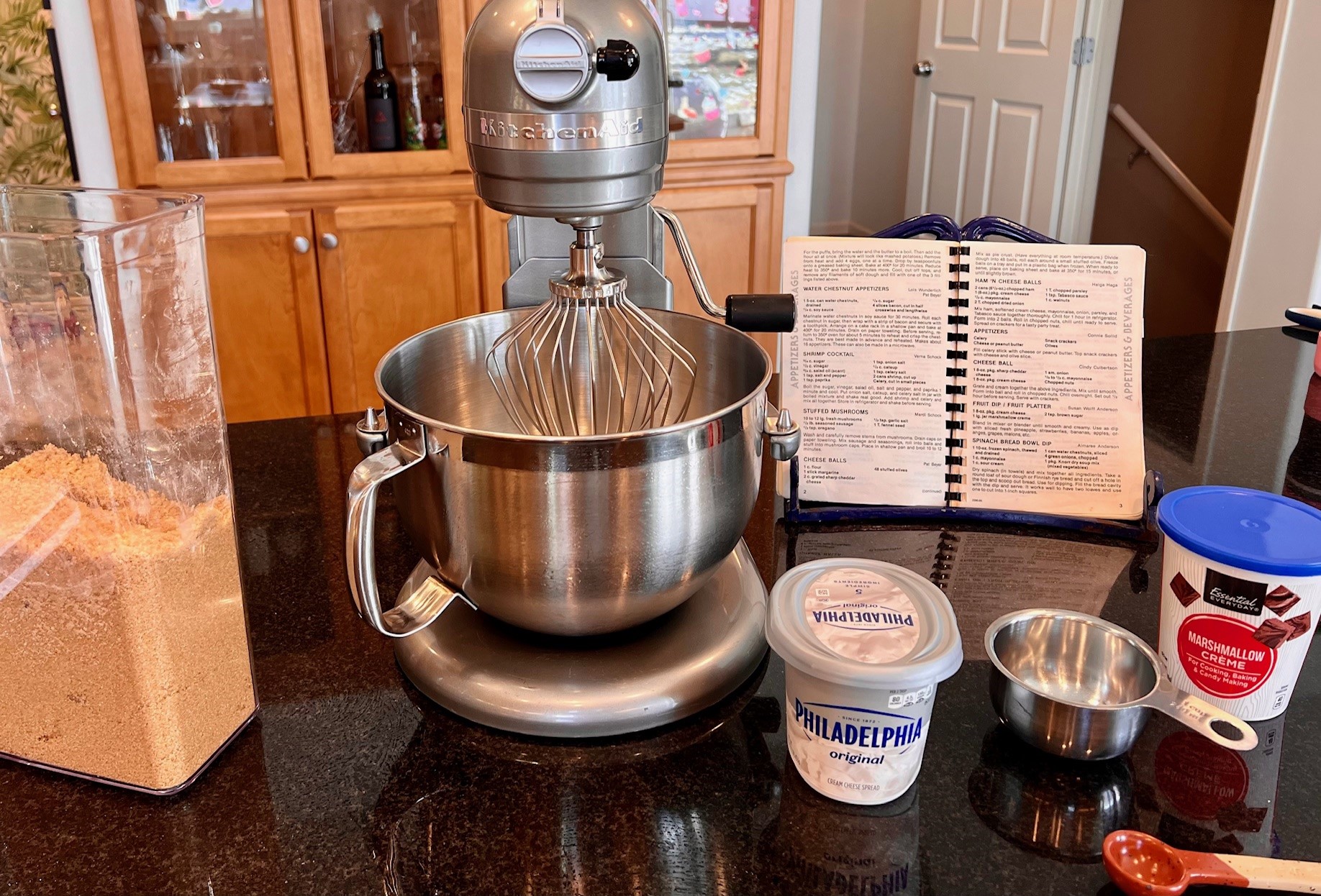
Since the final product is similar to making whipped cream, I elected to use my whisk attachment, as it would incorporate air into the cream—more than a paddle attachment could.
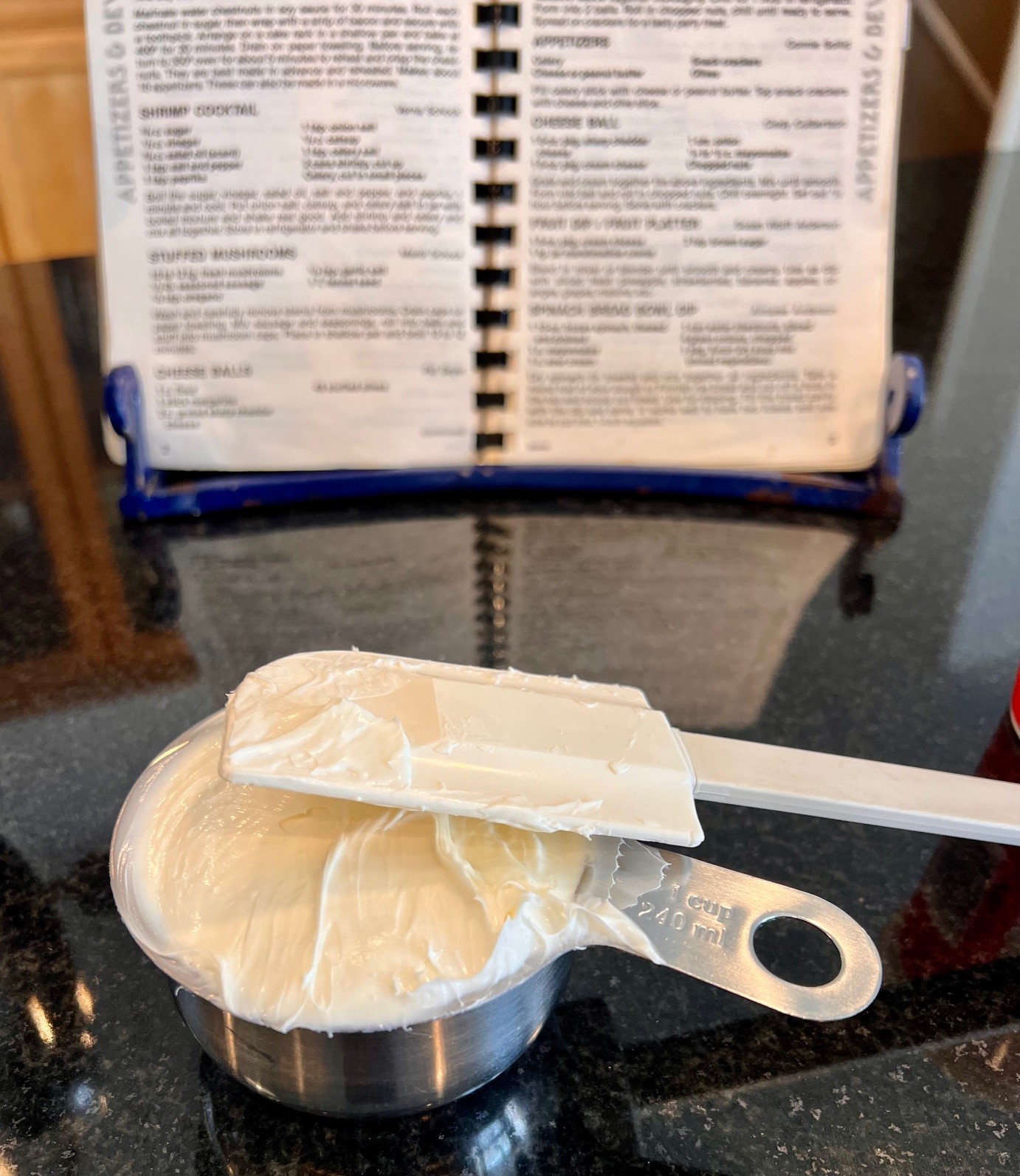
If I had planned ahead, I also would have put the whisk and the bowl into the freezer to chill, but this was a spontaneous decision, since a playdate seemed like a festive occasion to have a sweet accompaniment to our healthy fruit side.
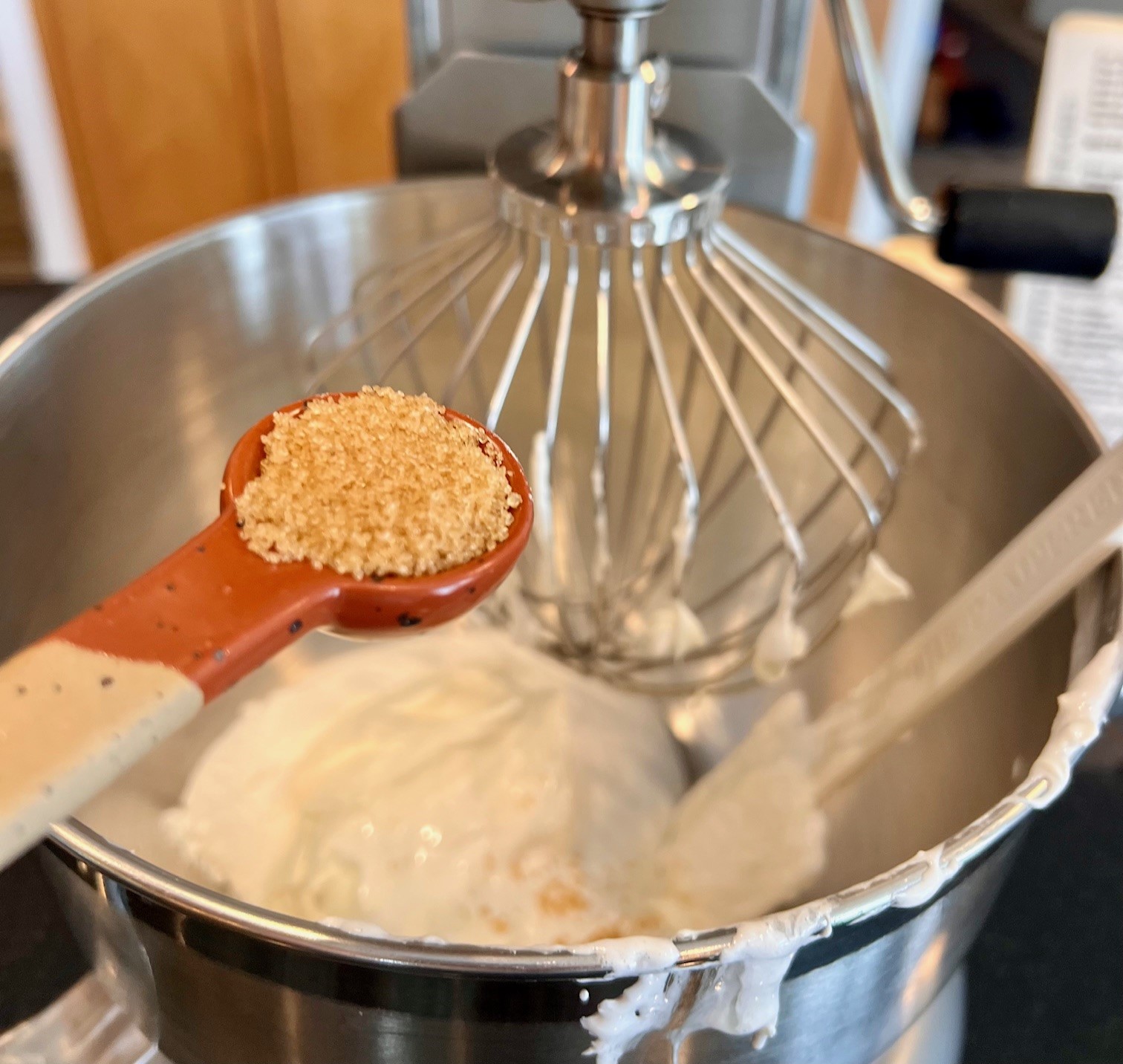
Cream cheese is thick, of course, which means that the mixture was lumpy at first, and that it took a lot of whisking to smooth out the pieces of cream cheese. But after about eight to ten minutes, we had a fluffy, shiny, smooth dip, poured easily into a serving bowl.
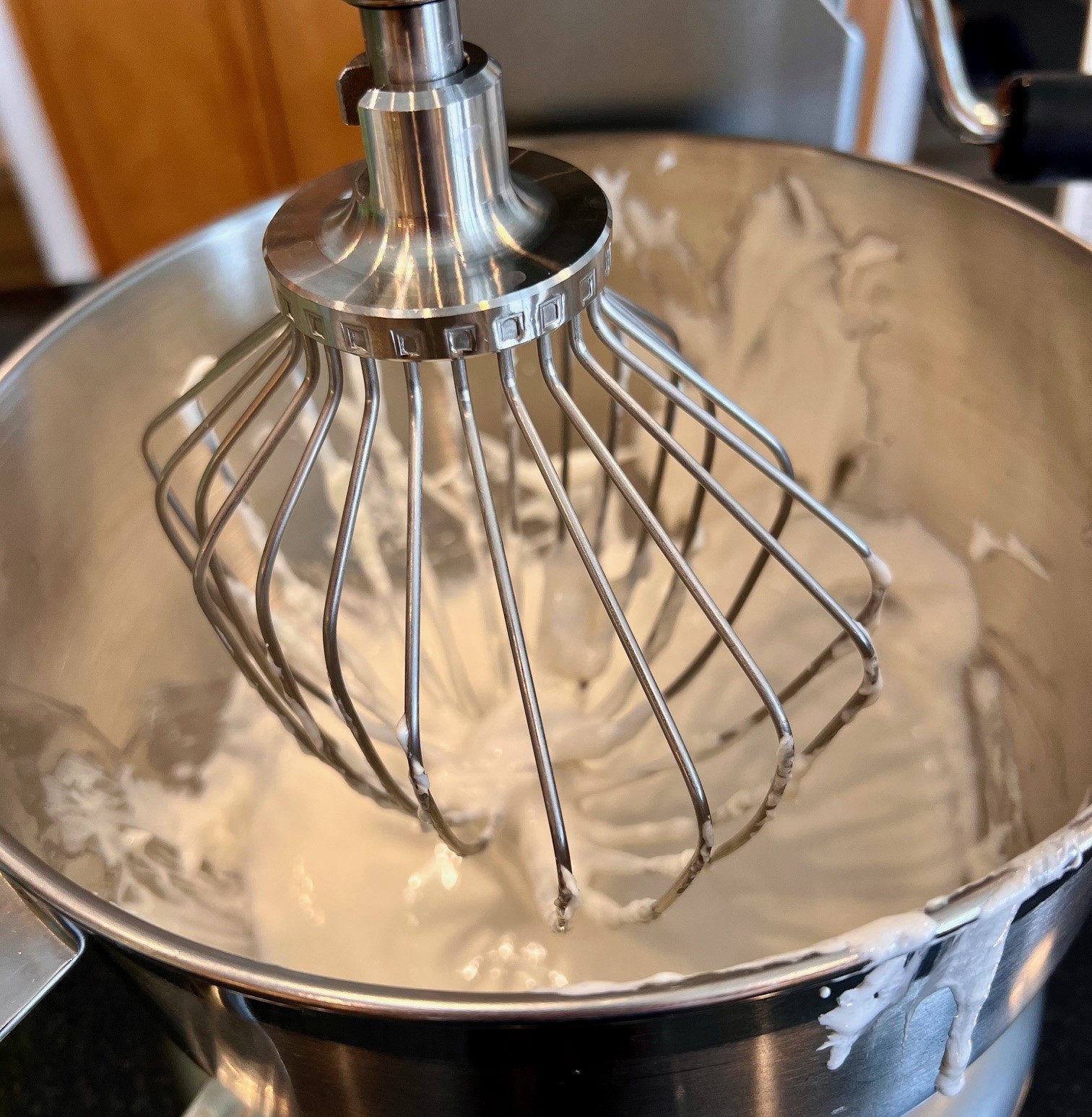
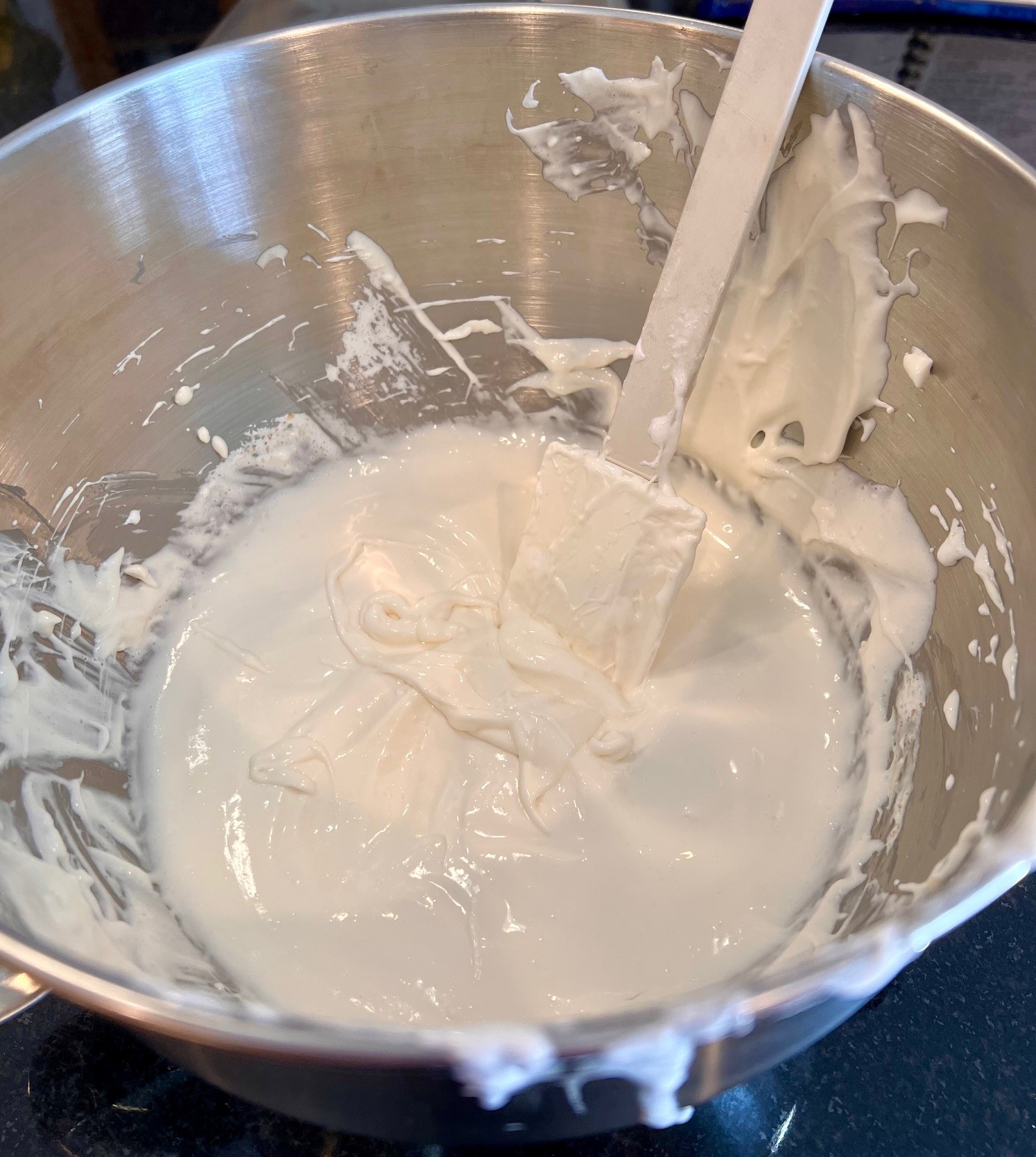
Reflections
The kids loved it! Much fruit was eaten, both by children and adults! The tart, slightly sour dip complemented the sweetness of grapes, pineapple, and strawberries, and the creamy texture added dimension to the juicy, slightly fibrous pineapple pieces and the seeded exterior of strawberries.
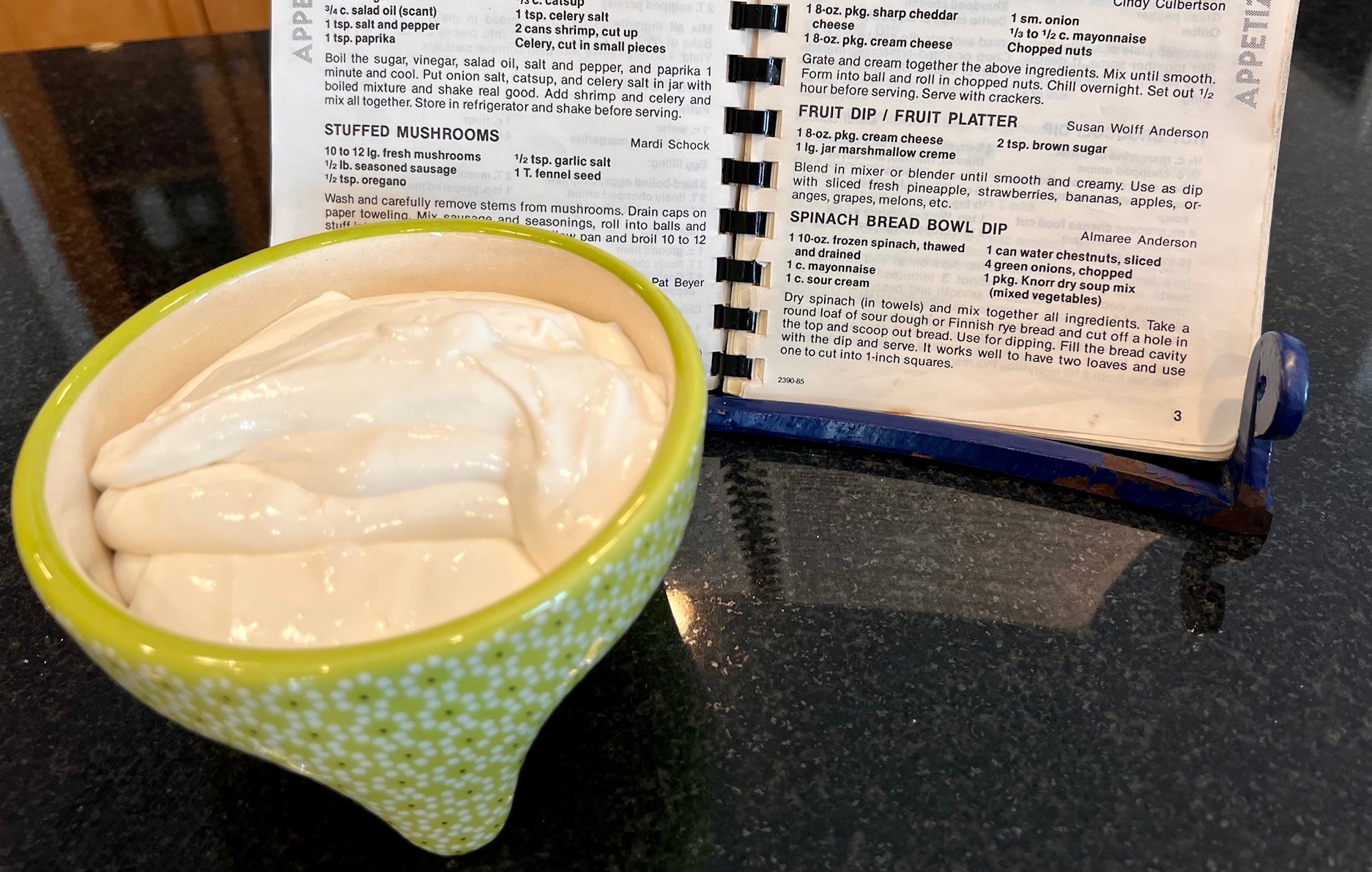
While I don’t think fruit needs more sweetness, and we know that children, with their more sensitive taste buds enjoy the sweetness of most fruits but may reject veggies, this is a fun way to make fruit special, similar to other treats which the most of fresh fruit, either as a foundation or as a topping. Fruit shines when macerated and topped with heavy whipping cream (or whatever creamy product you prefer); mounded onto a shortcake or angel food cake with whipped cream; or as a topping on ice cream. I like berries on my oatmeal, with a little bit of brown sugar and a splash of milk (usually oat too), cream, or half and half. I imagine a dollop of this dip would be divine on oatmeal, instead of sugar and the milk.
Again, this is a treat—a dessert, due to the marshmallow crème. It’s not something I typically buy—the Marzetti makes a similar one available near most fruit trays in the grocery store—nor have I made it before. I’m not very inclined to take it when I encounter it either. But it was fun as a novelty.
This particular version feels retro—it’s in some other community cookbooks and online but not in my more compendious cookbooks like Joy of Cooking, The Essential New York Times Cookbook, nor in Betty Crocker’s The Big Red Cookbook or Better Homes and Gardens New Cook Book, though the latter includes a sour cream fruit dip using preserves instead of marshmallow and cinnamon instead of sugar. I’ve seen other versions using yogurt too.
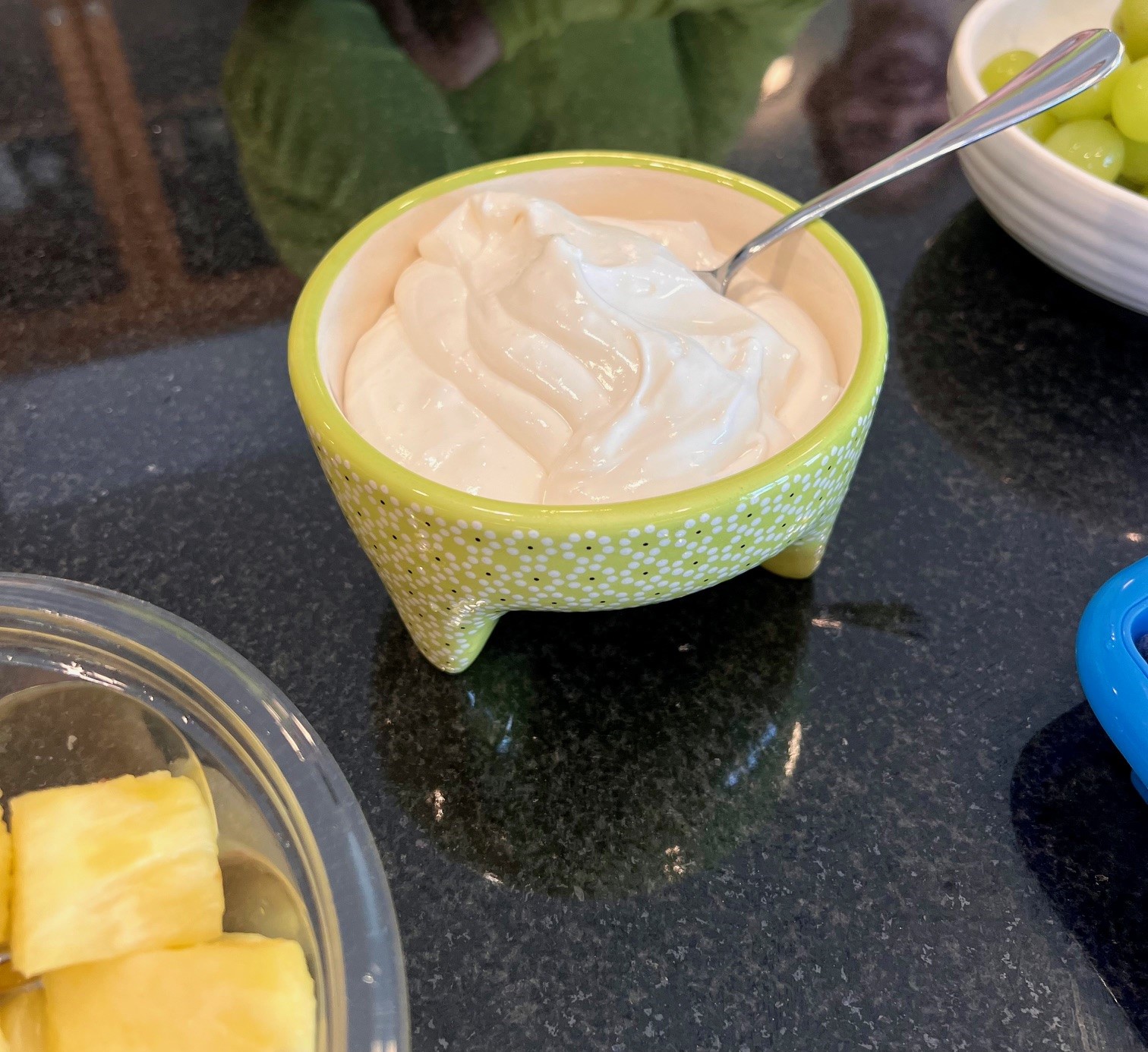
Like other candies, marshmallows can be made at home, as they consist of sugar and gelatin whisked to create aeration. In a Halloween episode of The Great British Baking Show, the contestants were asked to make s’mores, with homemade marshmallow; this was a technical challenge for two reasons: 1) typically the ingredients are store-bought—marshmallow, graham cracker, and chocolate bars; and 2) s’mores are an American sweet and were unfamiliar to many of the bakers. One contestant said he’d only seen them in films.
Another baker tried to conceptualize how to make marshmallow by comparing it to meringue, which is useful, since meringues are essentially “sweetened egg foams” (McGee 106). Though contemporary marshmallows are made with gelatin and sugar syrup rather than egg, their origin also involved egg foams, as Harold McGee explains: “Marshmallows were first made in France from the gummy root juice of the marsh mallow (Althaea officinalis), a weedy relative of the hollyhock; the confection was called pâte de Guimauve. The juice was mixed with eggs and sugar and then beaten to a foam” (691).
And now there are no more wetland plants involved. Typically, marshmallows are mass-produced confections, using corn-syrup, gelatin, and sugar whipped together, with an extra whipped derivation: marshmallow crème. The brand-name version of this “spreadable marshmallow cream” is “Marshmallow Fluff,” developed in Boston in 1915, according to Clara Silverstein, in her entry on this topic in The Oxford Encyclopedia of Food and Drink in America (48). That’s why you’ll hear both names—cream and fluff.
Both sound great, frankly, though I so wish I could try the British bakers’ homemade versions.
Contributor: Susan Wolff Anderson
Susan Wolff was born in the early 1950s, and grew up in the Makoti-Ryder area, southwest of Minot, ND. After attending college for a teaching degree, in 1975, she married Andrey Anderson, son of Loretta and Andrew Anderson of the Simcoe area north of Velva. After graduating from Minot State, Andrey taught in the high school in Makoti, and later farmed with his brother Stan Lee. The couple had two children and spend their time in both Texas and the Velva area. “Fruit Dip / Fruit Platter is the only recipe Susan contributed to The Joy of Sharing.
Hmm…
In some of my longer pieces of this project—the Centennial Scholars lecture I gave at Concordia College in January 2024, and a presentation at the Popular Culture Association National Conference in Chicago in March 2024—I’ve reflected upon why contributors contribute particular recipes, as well as the number of recipes they contributed. I’m eager to speak with contributors who submitted only one recipe—of those seventeen, several are still with us—to explore their engagement with food, cooking, and foodways of the Northern Plains.
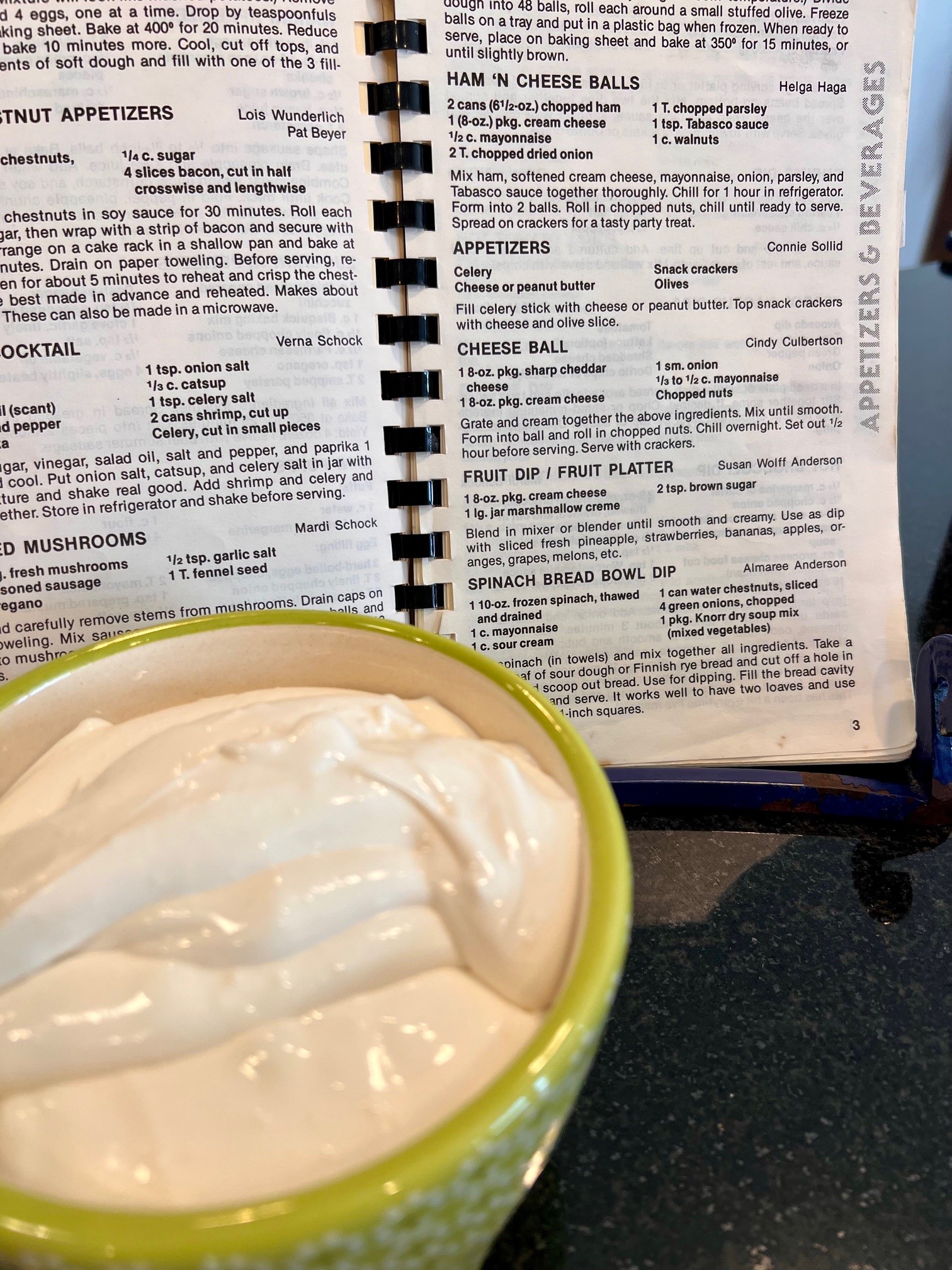
This post is part of an ongoing series in which I make and reflect on recipes and the people who contributed them to the 1985 Oak Valley Lutheran Church compiled cookbook, The Joy of Sharing.

